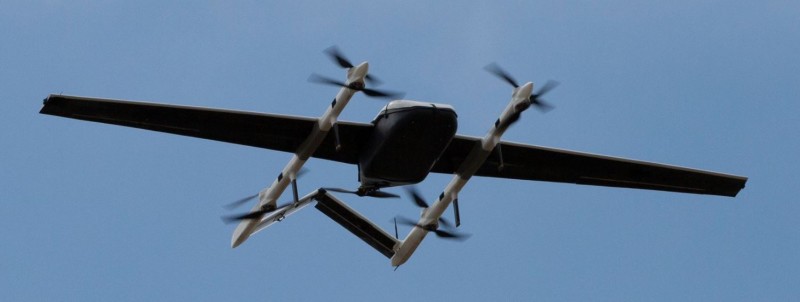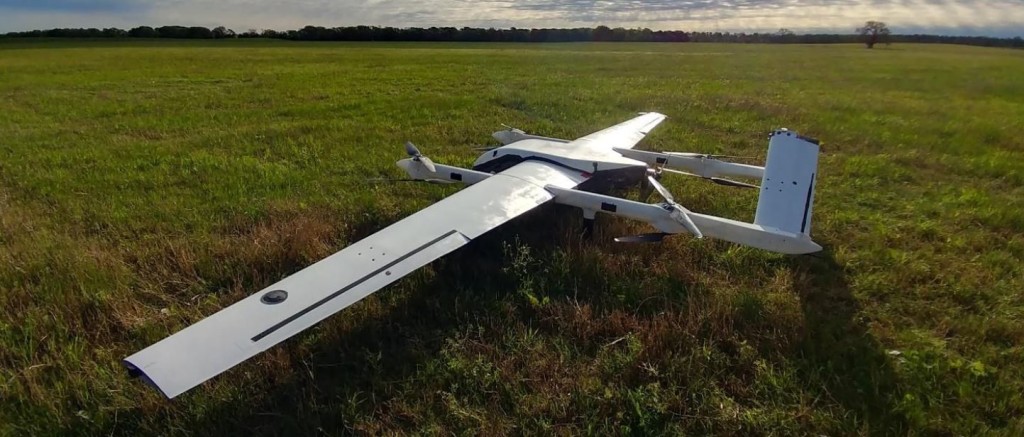Our current reality of social distancing and fear of COVID-19 contagion has brought to the forefront the issue of unmanned deliveries. Many companies are already advertising delivery of products that have not been touched by humans and the race for safe distribution of products is on.
One particular aspect of the delivery of goods is the dependency on human operators. If distribution of one item by an unmanned aerial vehicle (UAV) requires a remote pilot handling the controls and visual observers, the savings associated with the technology evaporate, so the real goal of unmanned supply of goods is that it must be either autonomous or at least semi-autonomous to start. But delivering on an aerial platform without a pilot and without human intervention is easier said than done.
One company in particular, Skyways, based in Austin, TX, is a pioneer in developing technology that allows its powerful eVTOL (electric Vertical Takeoff and Landing) drone to make deliveries completely devoid of remote pilots or ground personnel involvement. We had the opportunity to connect via phone with Charles Acknin, founder and CEO of Skyways, to ask him a few questions about the technology and their business model.
“We founded Skyways in 2017 out of frustration being stuck in traffic and seeing thousands of cars everyday bumper to bumper,” explained Charles. “As a pilot it was very obvious that transportation by air was the way to go, but one piece was missing to take it to the next level. This all changed in the last few years with the latest technology advances in autonomous robotics and in particular with AI and Computer Vision. If a UAV can see and fly all by itself safely, then it doesn’t take long until you can fly a fleet of thousands of these with very little human supervision and get amazing economies of scale. This is how this industry gets revolutionized.”
The Skyways vehicle is a hybrid fixed wing aircraft with eight electric motors for heavy lift takeoff and landing operations. It comes equipped with a powerful internal combustion engine for horizontal flight over long distances.

“We decided to design the aircraft with a hybrid configuration because we needed the flexibility of eVTOL and the long-range capability of a gasoline engine,” Charles stated. “The all-electric configuration only gave us a range of 65 miles, and we needed 250 miles to be competitive in our initial market.”
That initial market happened to be the US Navy, which, at the time, was actively looking for a completely autonomous delivery platform to satisfy a particular requirement for their operations.
“65 companies were looked at to compete in the quite difficult task to simulate the delivery, in a fully autonomous way, of a load of 20 lbs. of cargo to a moving ship and back for a total distance of nearly 40 miles’,” Charles began. “The tricky part was that we were only given a rough estimate of the location of the ship before take-off, given an 11-mile radius. The UAV had to intercept the ship and land on its deck vertically and into the wind all by itself, this is where Computer Vision played a big part. We won the contest as the only company that could fly the entire 1-hour mission with absolutely no human intervention. We beat one of the big prime contractors too. This immediately got us on contract.”
There are quite a few configurations out there that are capable of carrying heavy weight and flying long periods of time, but very few, to the best of my knowledge, who can claim that they can deliver their payloads entirely autonomously.
“Our differentiator is the software embedded in our platform and the ability of our technology to recognize obstacles from targets using computer vision. Our platform learns to navigate a route in search of a defined destination and to get there safely,” Charles said proudly. “We have made emphasis on our autonomous software as the key component of our solution from day one to safely deliver payloads over long distances and make the process reliable and scalable.”
Now Skyways is opening up to new markets and new opportunities where the needs are similar to the requirements of the US Navy, such as oil and gas rigs and overseas platforms. The sky seems to be the limit for a solution as effective as Skyways to deliver heavy loads over long distances and make the process routine and repeatable. The future of drone transportation services seems to be pivoted on the ability of these companies to make their deliveries as autonomous as possible.















Comments